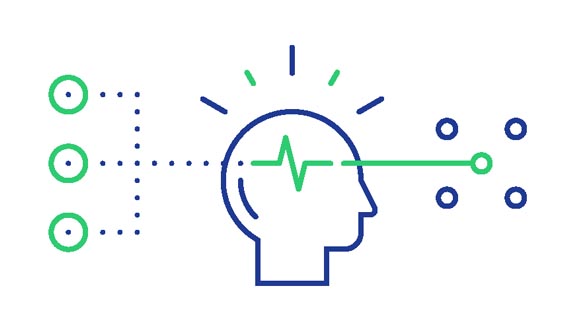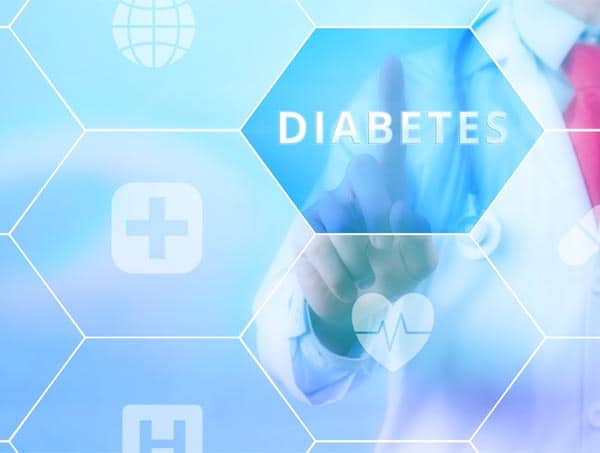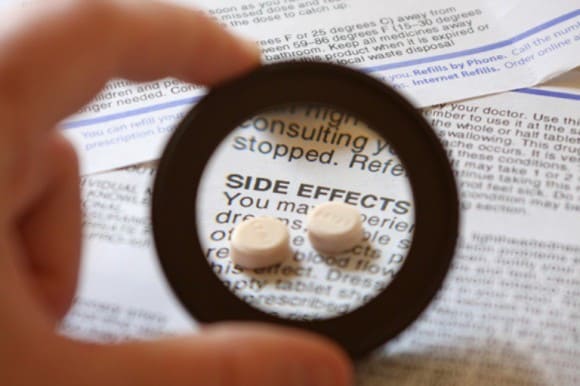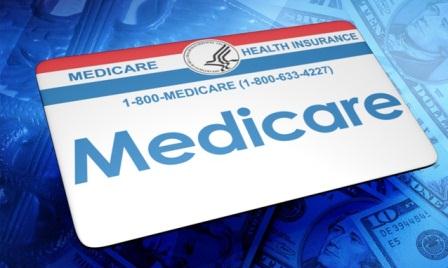One of my patients, who had been taking TZD, was admitted to the hospital for Congestive Heart Failure. The practitioner had erred, and had prescribed the medication to him while he has heart disease. The patient suffered from regular swelling of the lower extremities, and shortness of breath. TZDs should not have been prescribed to this patient.
The more we learn about diabetes medications, the more we, as Certified Diabetes Educators, can pick up on mismatched patient medications that could be dangerous, or even deadly. It is then our job to inform the prescribing healthcare provider that the patient is taking a diabetes medication that is contraindicated for their condition.
Contents
- Knowing your Type 2 Diabetes Medications “like a boss”
- What are Thiazolidinedione (TZDs)?
- What do combination medications do?
- Who can take TZDs?
- Side effects of TZDs
- What about side effects?
- What are the ingredients in TZDs?
- What do we not know about TZDs?
- Are there drug to drug interactions I should know about?
- What about the cost? Will my insurance cover it?
- Over to you
Knowing your Type 2 Diabetes Medications “like a boss”
In a patient without heart failure, the TZD class of medications for Type 2 Diabetes can be beneficial, and may even help you to reach target blood glucose and A1C levels. This article is about TZD and everything about them.
I find medications for diabetes fascinating. I hope you will find that learning about the different diabetes medications is not only interesting, but also helpful. Knowledge is power, and knowing your classes of diabetes medications gives you power in the provider’s office. You will be able to discuss various diabetes medication with your provider in a knowledgeable manner.
You may even pick up on an error by a practitioner. If you don’t have the appropriate information, you may be taking a medication that may not be compatible with your diagnosis of severe congestive heart failure. Rest assured, most practitioners would not make this mistake, however, it pays to be on your toes. Providers are on quotas, they are human, and they make mistakes from time to time.
What are Thiazolidinedione (TZDs)?

If your insulin no longer opens the locks on your body’s cell doors, you may then need a “Thiazolidinedione,” or TZD, for Type 2 Diabetes. Thiazolidinedione do not tell the pancreas to make more insulin, but rather increases the sensitivity to insulin at the cellular level.
Glucose uptake by muscles is improved when taking TZDs. This is through a mechanism in the cellular DNA, whereby TZDs interact with molecules inside the cells, and another substance that is normally present in fat tissue.
These three factors working together can affect cellular function by regulating metabolism of lipids, or the fat that is found in the bloodstream. In addition, the combination regulates a hormone called, “adiponectin.” This hormone works to improve insulin uptake by the cell receptors, thus improving insulin sensitivity.
Muscles are able to utilize glucose easier. All of these effects tend to reduce HDL, or “good” cholesterol in the bloodstream, but cause a mild elevation in LDL, or “bad” cholesterol. Thereby, insulin secretion based on insulin needs is reduced.
TZD medications do not increase insulin production by stimulating the pancreas to make more insulin. That is the task of some other classes of diabetes medications that are available for Type 2 Diabetes. TZDs will give the most benefit to patients who incorporate a healthy diet and moderate physical activity on a regular basis.
Types of Thiazolidinedione (TZD/s)
The first TZD was introduced in 1997, so this class of Type 2 Diabetes drugs has been around for 20 years. The very first TZD to come on the US market was troglitazone, or Rezulin. After 3 years of use, this drug was taken off the US market due to liver damage associated with its use. The UK decided to remove troglitizone from the market three years prior to the United States getting around to it.
The year 1999 brought the introduction of pioglitazone (Actos) and rosiglitazone (Avandia). These two additions to the TZD class of medications for Type 2 Diabetes seemed to not have the liver toxicity that was shown with troglitazone, although liver problems can happen when taking this medication. There are also other TZD drugs. The following is a list of some of the most common TZD medications prescribed today in the United States:
- Avandia (Rosiglitazone)
- Actos (Pioglitazone)
Some of the combination drugs containing TZDs:
- Trigulin – combination of Glimepiride, Metformin, and Pioglitazone
- Triglycomet - combination of glibenclamide, metformin (SR), pioglitazone
- Pioz Mf-G - pioglitazone, metformin, glimepiride 2 mg.
- Piomed – glimiperide, pioglitazone
- Actoplus Met – metformin, pioglitazone
- Avandamet – rosiglitazone, metformin, glimepiride
What do combination medications do?
Depending on what the TZD medication is mixed with, you will get different effects. With a TZD, you get reduced insulin resistance as the main benefit. If the TZD is combined with metformin, you get reduced production of glucose by the liver. Glimepiride and other sulfonylureas stimulate insulin production from pancreatic beta cells. All of these actions together can serve to help you better manage your diabetes when combined with regular exercise and healthy eating habits.
With combination medications, you can get any of the side effects of all of the medications combined. The best thing to do to keep you safe when taking combination medications for your Type 2 Diabetes is to talk with the pharmacist, and make sure that you understand the action, side effects, interactions, precautions, and contraindications for any combination diabetes medications that you are prescribed.
How do they work for the treatment of diabetes?
TZDs lower A1C by helping a person with Type 2 Diabetes use their own insulin better. The cells take the insulin on at the receptor on the outside of the cell, and the insulin then opens the “door” to the cell so that blood glucose can get inside and be processed for energy. TZDs can actually cause your body to generate new fat cells that are sensitive to your insulin. By making new and improved fat cells, TZDs help to lower your blood glucose.
Benefits
- A1C lowering around 1.5 percent
- Improvement of blood glucose closer to target range
How to take them or how should they be used?
TZDs are prescribed by a healthcare provider for patients with Type 2 diabetes. They should be taken only with a prescription. They may be started alone, or in combination with other medications for Type 2 diabetes, or with insulins. They are commonly combined with metformin or sulfonylureas in dual drug or triple drug combination.
TZDs are part of the “Second tier” when providers prescribe the medication, so they are not the first drug of choice for Type 2 Diabetes. The first line drug for Type 2 Diabetes is Metformin under most circumstances. TZDs may be tried after metformin (biguanide) and other sulfonylureas, such as glimepiride, have been tried, but are not tolerated or have not worked.
It is not safe to take more or less than your recommended dosage of TZDs. It’s a good idea to review your patient leaflet with your pharmacist in order to make sure that you understand the side effects and contraindications of the medication. Your doctor or healthcare provider can also help to explain your medication to you.
How many times a day do I take a TZD medication?
TZDs are oral diabetes medications, so they come in tablet form only. Rosiglitazone is usually taken once or twice daily, while pioglitazone is taken once a day. The tablets can be taken with food or without food. Taking the medication at about the same time every day is important for the medication to work appropriately. Your doctor or healthcare provider should gradually increase your dosage of TZDs.
What if I forget to take a dose of my TZD medication?
If you forget to take your medication, take it as soon as you remember to. If it is close to time for the second dose of the day, then you should skip it. Don’t ever double-up, or take two pills at once.
Will I gain weight on TZDs?
Rapid weight gain can mean that your body is taking on too much fluid. This places pressure on your heart, and can cause Congestive Heart Failure. If you notice that you have gained over three pounds in a week, call your doctor.
With obesity being so closely linked to insulin resistance and cardiovascular disease, weight gain with Type 2 diabetes is usually carried with its negative consequences. The problem with TZDs and weight gain is that they cause the fat in our bodies to move from one place to another.
Fat goes from the visceral to the subcutaneous level, which in turn helps insulin sensitivity. It has been found through studies that though TZDs do cause weight gain, they don’t really have to. A diet low in sodium or salt, and lower in calories, along with a visit to a Registered Dietician or Certified Diabetes Educator can do wonders to prevent the weight gain with TZDs.
Who can take TZDs?
The TZD class of diabetes medications are for Type 2 Diabetes patients only. People with Type 1 Diabetes do not take the TZD class of medications. This is due to the fact that TZDs help to decrease insulin resistance. Insulin resistance is a hallmark of Type 2 Diabetes. People with Type 1 Diabetes do not have insulin resistance, because they do not make any insulin to be resistant to.
For more on diabetes treatments read the following:
People with Type 1 Diabetes must take insulin every day of their life in order to manage their diabetes. TZD medications would not be of benefit to a Type 1 Diabetes patient. [1]
Furthermore, people with severe Congestive Heart Failure should never take TZD medications, and people with mild congestive heart failure should use TZDs with extreme caution, and under a medical provider’s supervision. Similarly, people with known liver problems should avoid TZDs. [2]
How do they work with other diabetes medications?
TZD medications for Type 2 Diabetes can be used by themselves, or they can be combined with other diabetes medications or insulins for optimal management of Type 2 Diabetes. They provide the decreased insulin resistance, while other medications, such as metformin, provide a method to block glucose release from the liver. They do lower blood glucose, and with other combination medications, and with insulins, the upmost care should be taken to avoid an episode of hypoglycemia.
How effective are they?
If your doctor or healthcare provider has prescribed a TZD, you can expect to see an A1C lowering of about 1.5 percent with either (Actos) or rosiglitazone (Avandia). TZDs do take a while to get fully into your blood steam, generally about four weeks will go by before you start seeing the blood glucose lowering effects of TZDs.
It can take anywhere from 8 to 16 weeks before the full effects of the drug are realized. The A1C lowering effect will generally occur by around eight weeks of continuous drug therapy with a TZD. It may be a full 18 to 24 weeks before maximum results with TZD drug therapy is achieved.
Side effects of TZDs
Anemia and weight gain are common side effects with TZDs. Most side effects of TZD medication will be something that your doctor is keen on looking out for. Still, it makes sense that you should know the side effects of the medications that you are taking for your Type 2 Diabetes, so that you can be on the lookout for them. You will want to nip any medication-related problems in the bud.
Side effects that can occur immediately following starting a TZD
Here are the symptoms that could occur just after beginning TZD medication therapy. Some of these can be severe, or life threatening…
- Swelling (edema) – feeling fatigued and gaining weight due to water retention from TZDs is common at onset of drug therapy; TZDs upset the salt balance that normally exists in your body, causing the kidneys to hold onto excess salt. The salt then leaks out through blood vessels, and starts to build up in the body. This is what causes the edema, or swelling.
- Heart Failure – increased blood pressure places undue pressure on the heart, which could lead to congestive heart failure. Many studies have been done to look at TZDs relationship to heart failure. Long term use of TZDs can lead to increased swelling from the retention of fluid. The pressure in the heart increases, which increases the risk for heart failure.
- Increased LDL, or “bad” cholesterol levels – a mild elevation in LDL or “bad” cholesterol has been noted, along with an increase in HDL, or “good” cholesterol. TZDs may increase bad cholesterol in the blood steam. This occurs more often with rosiglitazone than with pioglitazone. LDL “bad” cholesterol is a contributor to plaque build-up in the arteries, or atherosclerosis. You can combat this with diet and exercise.
Symptoms of severe allergic reaction to TZDs
You will need to let your doctor or healthcare provider know if you are allergic to any of the ingredients in TZDs. A severe reaction to any component of TZDs can occur, and includes:
- Swelling in throat, tongue, face or hands
- Difficulty breathing or swallowing, feeling of throat closing up
- Itchy skin rash
- Hives that look like large, red, raised areas on the skin
- Blister like sores on your lips on inside your mouth
- Skin that peels easily
- Dizziness, or fainting feeling
- Rapid heartbeat (tachycardia)
Symptoms of hypoglycemia or hyperglycemia
TZDs work through several mechanisms to lower blood glucose. Therefore, you must always be vigilant in looking out for the signs of low blood sugar.
What about side effects?
All medications have them, and many people can tolerate minor side effects. You may speak with your pharmacist about the side effects of your medications, and they should give you a print-out of the side effects. If the benefits of the medication outweigh the risks of taking the medication, then you may decide to continue.
It could be that after a while of taking the TZD medication, you begin to see the side effects lessening. If you are not sure, speak with your doctor or pharmacist to ensure that you stay safe when taking TZDs. Don’t stop taking your medications before speaking with your doctor about your plans.
Pioglitazone side effects
You will want to let your doctor or healthcare provider know if you have any of these symptoms of the side effects of pioglitazone. If they are severe, or won’t go away, you will certainly need to give your provider a call.
They are:
- Muscle pains
- Arm or leg pain
- Sore throat
- Headache
- Excessive gas
Pioglitazone can cause liver problems. However, it is not as common as with Resulin, which has been taken off the market in the United Kingdom and the United States.
Signs of liver problems include:
- Nausea and vomiting with loss of appetite
- Pain in upper right quadrant of the stomach or back
- Dark urine, cloudy urine, or urine with a strong odor, containing pus or blood
- Yellowing skin or eyes (jaundice)
- Bleeding or bruising
- Fatigue or lack of energy
- Vision changes
In some studies, more people with Type 2 Diabetes who took pioglitazone for over a year (long term use) developed bladder cancer. There was also an increased risk for bone fractures in women. Many women taking pioglitazone developed broken bones in the upper and lower extremities. Therefore, before going on these medications, women should be evaluated for the benefits over the risk of taking pioglitazone.
As with any medication, you may have some unusual side effects that quietly crept on without prior signs. Keep an open line of communication with your provider in case an unusual side effect rears its ugly head. Your doctor can contact the Food and Drug Administration if you have a side effect through their Adverse Event program. You may also call 1-800-332-1088 to report a side effect.
Rosiglitazone side effects
Besides changes in your blood glucose, Rosiglitazone has some common side effects such as:
- Headaches
- Cold symptoms and runny nose
- Back and side pain, or abdominal pain
Other more serious side effects include:
- Arm, back, neck, or stomach pain, or pain radiating to the jaw area
- Chest pains
- Diaphoresis (sweating)
- Feeling lightheaded
- Anorexia, or loss of appetite
- Nausea and vomiting
- Stomach pains
- Dark or strong smelling urine
- Jaundice or yellowing skin
- Changes in vision, blindness
- Skin that looks pale
- Swelling of the body
- Faintness or dizziness
- Hoarse throat
- Fever, fever blisters
- Symptoms of severe allergic reaction, as stated above
- Fractures (upper arms, feet)
You could also experience other side effects with rosiglitazone. Keep in close contact with your doctor if you experience any side effects of this medication.
What are the ingredients in TZDs?
It is also helpful to know the ingredients in TZDs, so to confirm you are not allergic to the ingredients in the medication.
The ingredients in Actos(Pioglitazone)
The active ingredient is Pioglitazone hydrochloride.
Inactive ingredients include Lactose monohydrate, hydroxypropyl cellulose, carboxymethyl cellulose calcium and magnesium stearate.
The active ingredient is Pioglitazone hydrochloride
Inactive ingredients include Lactose monohydrate, hydroxypropyl cellulose, carboxymethyl cellulose calcium and magnesium stearate.
The ingredients In Avandia (Rosiglitazone)
The active ingredient is Rosiglitazone maleate.
Inactive ingredients are Hypromellose 2910, lactose monohydrate, magnesium stearate, microcrystalline cellulose, polyethylene glycol 3000, sodium starch glycolate, titanium dioxide, triacetin and 1 or more of either red iron oxides, yellow iron oxides (both of which are synthetic), and talc.
Dangerous sideeffects for which medical consultation must be sought out
Long term safety of TZDs is still questionable. Swelling (edema), and even heart failure have occurred. People with Type 2 Diabetes who are taking TZDs, and who also have mild heart failure, should use TZDs only with caution under a doctor’s care. If heart failure is severe, TZDs should not be used in these patients. Rosiglitazone has been shown to prevent blood vessel narrowing after angioplasty, but more studies are needed.
An analysis of 42 studies showed that Rosiglitizone is associated with an increased risk of death related to heart attack. Two larger studies on pioglitazone (Actos) and rosiglitazone (Avandia) showed an increase in heart failure with the TZD class of medications for Type 2 diabetes. Strangely, a decrease in heart attacks was shown with pioglitazone.
The FDA currently evaluates all diabetes related drugs for heart safety in a stringent manner. Cardiac safety of rosiglitazone is still under scrutiny, as findings from some of these studies are in question by scientists due to criticism of the methods used.
Warnings
For women in menopause
Women in menopause could experience more heart failure symptoms, including weight gain and swelling or edema. They may also experience more fractures while taking rosiglitazone. Women should speak with their doctor about these concerns, and ask about for supplements to keep their bones safe from fracture if they are taking Rosiglitazone.
What do we not know about TZDs?
The effects of TZD on nutrient depletion in the body have not yet been studied. Therefore, we do not know if TZDs would eliminate or deplete certain nutrients that our body needs. With Type 2 Diabetes, we will want to follow a heart healthy and reduced carbohydrate diet, in order to make sure that we get all of the nutrients that we need.
It is a good idea to talk with your doctor or healthcare provider about any vitamin and mineral supplements you should or should not be taking. Make sure to go over all of the herbal remedies that you plan to take or are taking. You should always check with your provider before starting herbal supplements to your diet. We do not yet know how these supplements may react with certain diabetes medications, including TZDs.
Some supplements that may help heart health and reduce swelling when taking TZDs
Some dietary supplements have an effect of purging water from the body, which reduces retention and swelling. This in turn keeps the heart from having too much fluid and pressure around it. Still, it is advisable to run all this by your healthcare provider before starting any supplement. The supplements that may help the heart are:
- Fish oil (6 gm)
- CoQ10 (100 mg)
- Daflon (3 gm)
Are there any other precautions I should know when taking TZDs?
You always need to inform your doctor and pharmacist of any allergies to any medications, including any of the components found in TZDs.
Inform your doctor and pharmacist in case you are allergic to TZDs (Pioglitazone/rosiglitazone) or any of the substances in TZD tablets, including other medicinal drugs.
In addition to informing your doctor of the nutritional supplements you are taking, you should also let them know if you are taking any over-the-counter medications, vitamins, or other products that could interact with the TZD medication. If you become sick, have an infection or fever, or are physically injured, blood sugars may be affected. The doctor or healthcare provider may need to adjust your dosage during these times.
What about pregnancy and breastfeeding? Are TZDs safe?
If you are a breastfeeding mother, pioglitazone is not safe to take. It contaminates the breast milk, and may affect your newborn baby. Do not take TZDs if you think you are pregnant, or you are planning to become pregnant. TZDs also cross the placenta, and can affect the developing fetus.
Are there any storage guidelines for TZDs?
TZDs are stored at 77 degree Fahrenheit. This is 25 degrees in Celcius. The pills are stored in a container that is resistant to light, and protects them from humidity and moisture.
What makes my TZD medication work better?
Losing some weight, usually five to ten percent of total body weight, staying active on a regular basis (about 150 minutes a week), helps TZD medications work better. You will have better control of your Type 2 Diabetes, which will make you feel so much better in the long run. Not to mention, you are living healthy with diabetes when you follow a healthy lifestyle
Are there drug to drug interactions I should know about?
These are the drug interactions you need to know about before you take this medication.
Pioglitazone
For pioglitazone, Gemfibrozil is contraindicated. This medication will increase the amount of pioglitazone that enters your blood stream. This can be a safety concern when you obtain more than the recommended or maximum dosage of TZDs.
Rifampicin is also contraindicated with pioglitazone. It has the opposite effect of Gemfibrozil, and lowers the amount of pioglitazone in the blood stream. If a patient is taking rifampicin at the same time, the medication dosage may need to be adjusted. In this particular case, pioglitazone dose should never exceed 45 mg. [3]
Rosiglitazone
Genfibrozil also increases rosiglitazone in the blood stream. Conversely, rifampicin decreases the amount of rosiglitazone in the blood stream. Dosage may need adjusting if the patient is taking either of these medications, and is based on clinical presentation. [4]
What about the cost? Will my insurance cover it?
This factoid surprised me. As it turns out, TZD medication is costly, with the cost per year being around the same as insulin pens over three years. The cost of TZDs was 1389.78 per year, and cost less than insulin in the first year at $1959.25. However, after three years, the costs were just about the same, with TZDs costing $4185.82, and insulin pens costing $4286.19.
Insurance may or may not cover it. There are many factors that play in, like your deductible amount, and how much you have paid into it so far in the year. Drug plans are different from insurance company to insurance company, and from plan to plan. Some plans don’t have a prescription plan.
For further reading:
- Metformin: Are You Taking This Common Type 2 Medication? Here’s What You Need to Know
- 10 Diabetes Medication Errors: You Could Be Making These Errors
- Nova Max Blood Glucose and Ketone Meter Review
- The Connection Between Diabetes, Heart Disease, And Stroke
- Controlling Type 2 Diabetes Through Diet - Expert's Panel
There are so many variables that the best thing to do is to go on your insurance company’s website or call your insurance company to find out if they are covered. Many companies have a list of drugs covered on their websites. Asking the pharmacy to run it through for you can also give you an idea of the coverage and cost to you. [5]
Over to you
I hope that I have thought of any question that you might have about TZD medications. If I have left anything out, or you have any questions, please let us know in the comment section below and share the article with anyone who might find it useful.
TheDiabetesCouncil Article | Reviewed by Dr. Sergii Vasyliuk MD on May 28, 2020
References
- https://www.ncbi.nlm.nih.gov/pubmed/14678865
- https://www.endocrineweb.com/conditions/type-2-diabetes/thiazolidinediones-tzds-or-glitazones-type-2-diabetes
- https://www.sepalika.com/type-2-diabetes/what-are-tzds-side-effects/
- http://www.webmd.com/diabetes/thiazolidinediones-for-type-2-diabetes
- http://www.bcmj.org/article/insulin-therapy-no-cheaper-thiazolidinedione-therapy-patients-type-2-diabetes














